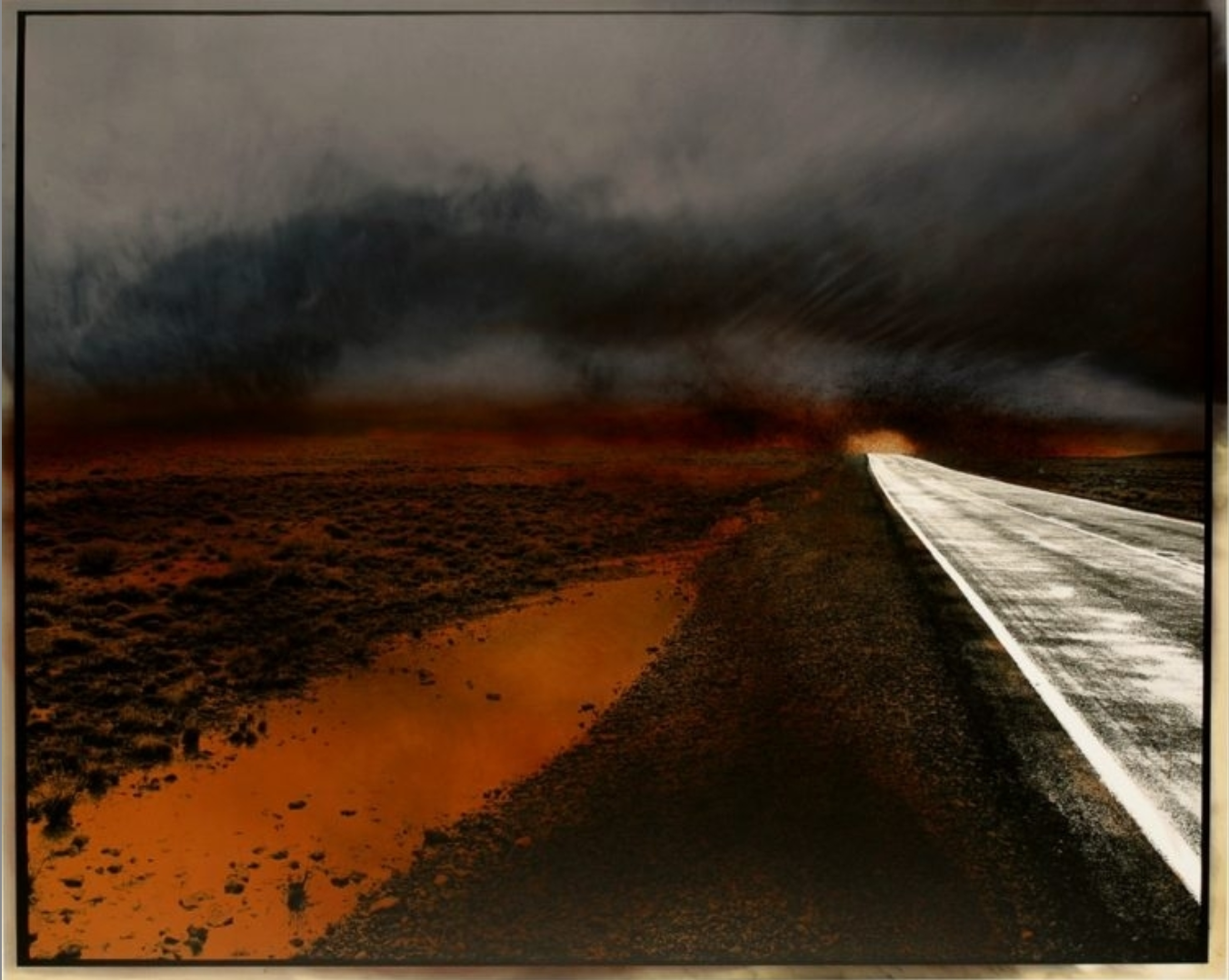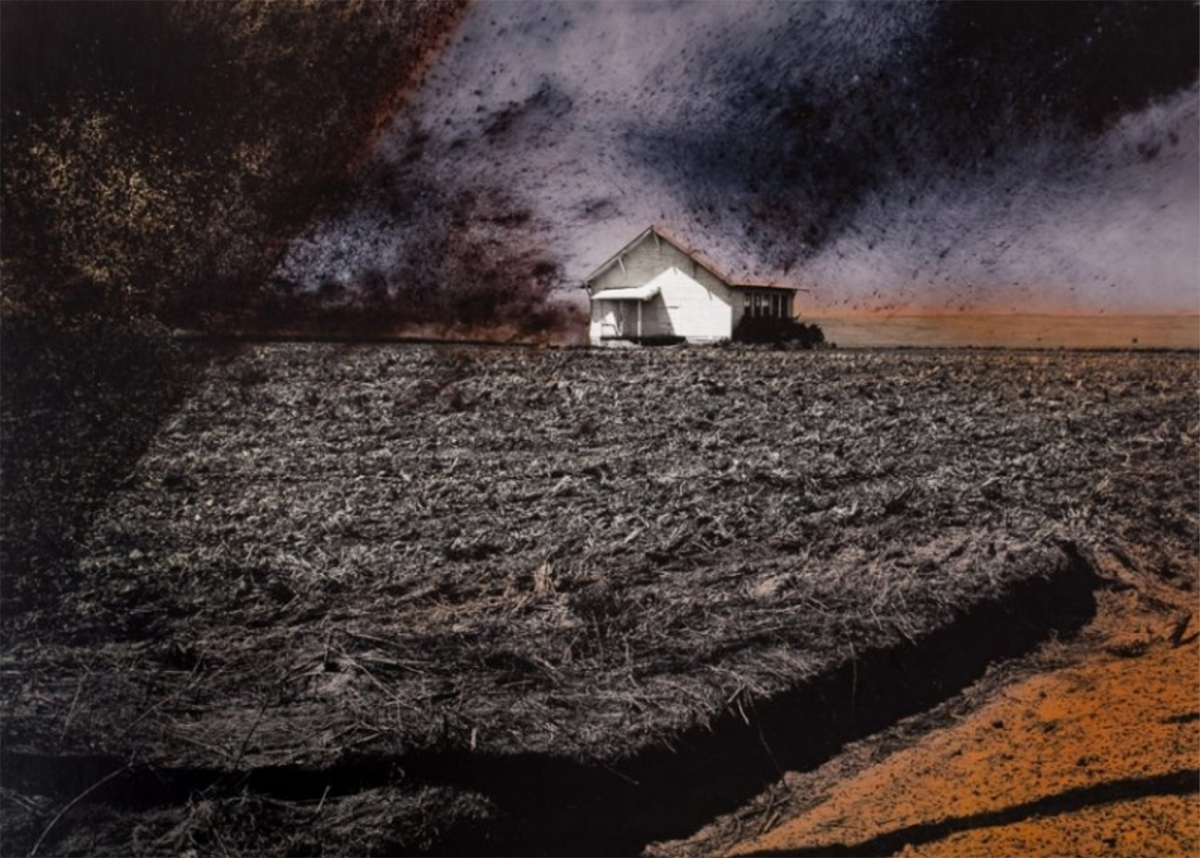Denny Moers
 From the first architectural abstractions to the current body of work with landscapes and structures from around the world, I have sought to sustain an emotional core and further a sense of mystery with the understanding that subject matter is always internal. – Denny Moers
From the first architectural abstractions to the current body of work with landscapes and structures from around the world, I have sought to sustain an emotional core and further a sense of mystery with the understanding that subject matter is always internal. – Denny Moers
Denny Moers is known for his highly imaginative, technically innovative monoprints created by controlling the action of light on the chemical sensitized photographic paper during the print developing process, giving his black and white photographs an extraordinary range of tonalities. He has photographed subject matter as diverse as New England architecture, medieval wall frescoes and tomb reliefs, contemporary constructions sites and western landscapes and dwellings.
His feature and video interview were published in the inaugural issue of the Networks project, Networks 2008 which featured nineteen Rhode Island based Artists across a broad spectrum of media and interests.
Denny Moers: in his own words…
The American poet, Charles Olson described the process of composing poetry as an open field; words forming their meaning directly and concretely on this ‘landscape made of paper’. I have always felt the visual experience as collaboration with this open field; sensitized to everything I could bring to it and receive from it through the interaction of light, chemistry, film and paper.
I have photographed subject matter as diverse as New England architecture, medieval wall frescoes and tomb reliefs, construction sites, western landscapes, abandoned structures, movement of water and the visual remains of cultures from around the world.
The act of photographing often demands attention to technical details and I have countered this technical control with an equal involvement using the fluidity of accident in the making of my monoprints. I call this the ‘struggle for the horizon line’ and its balance continues to evolve.
Photographing and printing have been one of transformation from the literal to the imagined; from the seen to the felt; from the invisible to the visible. The poetic insight for me is one of intangible qualities that can sustain a viewer through a core mystery made manifest by the artist.
As I explored new subject matter, the process of making these monoprints evolved from subtle, pastel like tones into an expressive bold range of hues from deep blues to saturated reds—all coaxed out through the chemical and light interaction of black and white photographic paper.
The idea of the monoprint is central to my working process as all prints are unique and can render different ideas and feelings each time the image is printed in the darkroom.
From the first architectural abstractions to the current body of work with landscapes and structures from around the world, I have sought to sustain an emotional core and further a sense of mystery with the understanding that subject matter is always internal.
A selection of Photographs from Structures & Landscapes…
A Note on the Process & Technique utilized to create these prints…
All tonalities in these monoprints are inherent in the black & white silver chloride paper itself. There is no hand application of colors. I shoot black & white film and develop a traditional silver chloride print. After the print is developed and before it is fixed, I put the print through a stop-bath then squeegee off the excess water and place the print onto a sheet of glass under a bank of incandescent lights. I begin ‘fogging’ the print by exposing the paper to light which alters the tonalities of the unfixed print. As the print continues to light fog, I ‘paint’ by applying the fixer locally, and that acts as an immediate stop to the fogging process. This is a fluid process with water, developer, and fixer constantly interacting. After fogging is complete, I may choose to selectively tone the silver prints with permanent metal toners such as gold chloride, selenium and sulfide. These toners react chemically with the silver and create a new range of tonalities; from the reddish brown of selenium to the midnight blue of gold chloride. In addition, I sometimes use selective bleaching for subtractive tonalities. As the process is extremely fluid, the result of this work is difficult to pre-visualize, and often I cannot see what the final tonal results will be until the print is completely dry. With this method of printing, I feel the notion of the monoprint is more or less absolute since I’m unable to duplicate the form, emotion and structure of any previous print.
– Denny Moers
A video Interview with NetWorks Photographer Denny Moers
About the Artist: Denny Moers was born in Detroit, M.I. in 1953. He received his MFA from the Visual Studies Workshop in 1977. During the early eighties, he worked as Aaron Siskind’s first assistant. He is currently teaching at Roger Williams University. His photographic monoprints are included in numerous public and private collections, including the Addison Gallery of American Art in Andover, M.A.; the Baltimore Museum of Art; the Bibliotheque Nationale in Paris; the Museum of Fine Arts’, Boston and Huston; the Israel Museum in Jerusalem; the High Museum of Art in Atlanta; and the Museo Rufino Tamayo, Mexico City.
Source: NetWorks 2008 Catalogue
Networks Rhode Island June 17, 2008
You can find more of Denny’s work on his website at dennymoers.com or on numerous book jackets including poetry by close friend and Rhode Island Poet Laureate C.D. Wright. You can read her synopsis of Denny Moers in her essay, The Ecstatic Eye
Denny’s work is held in many public and private collections and can be purchased directly through the artist’s website










Leave a Reply